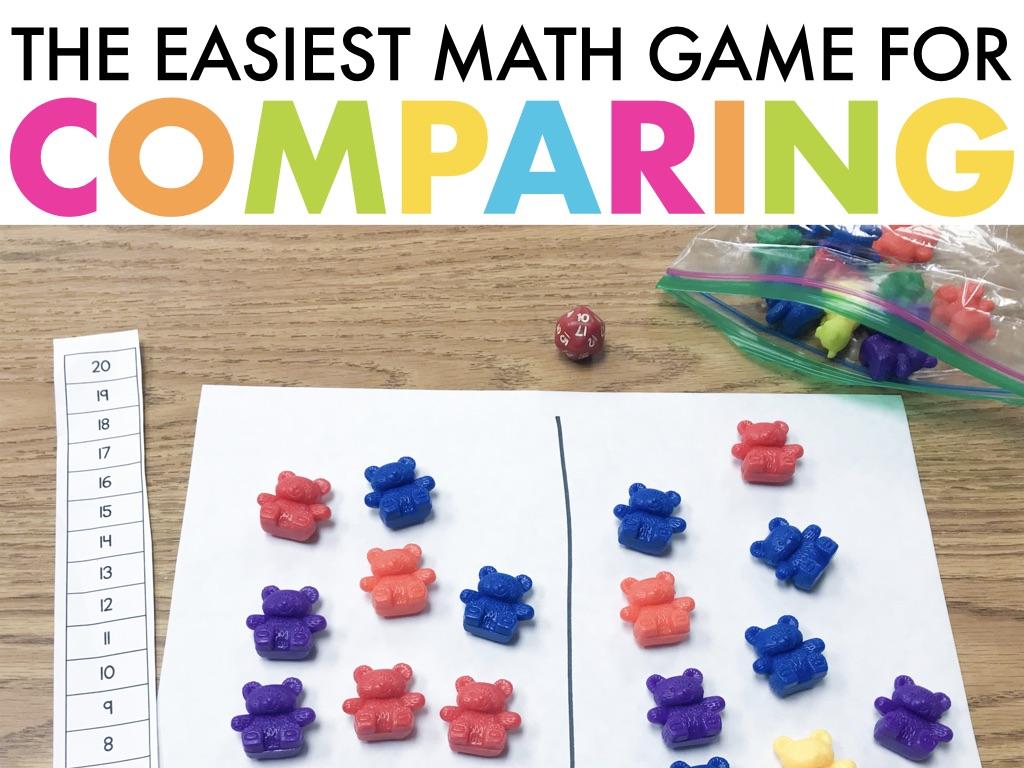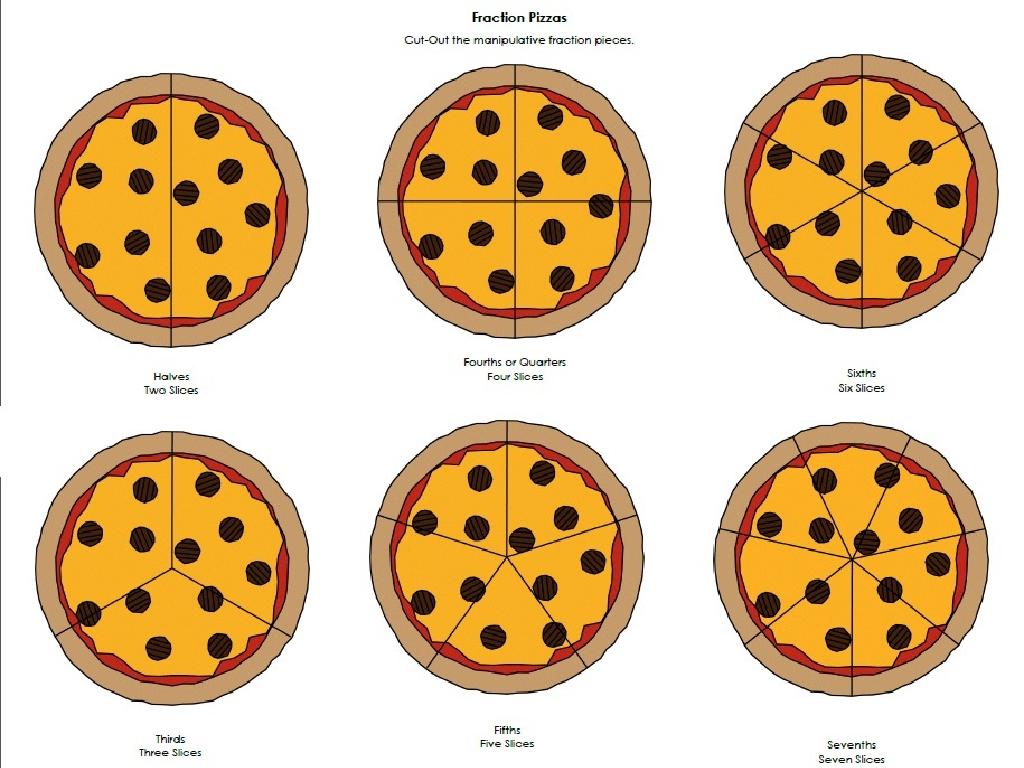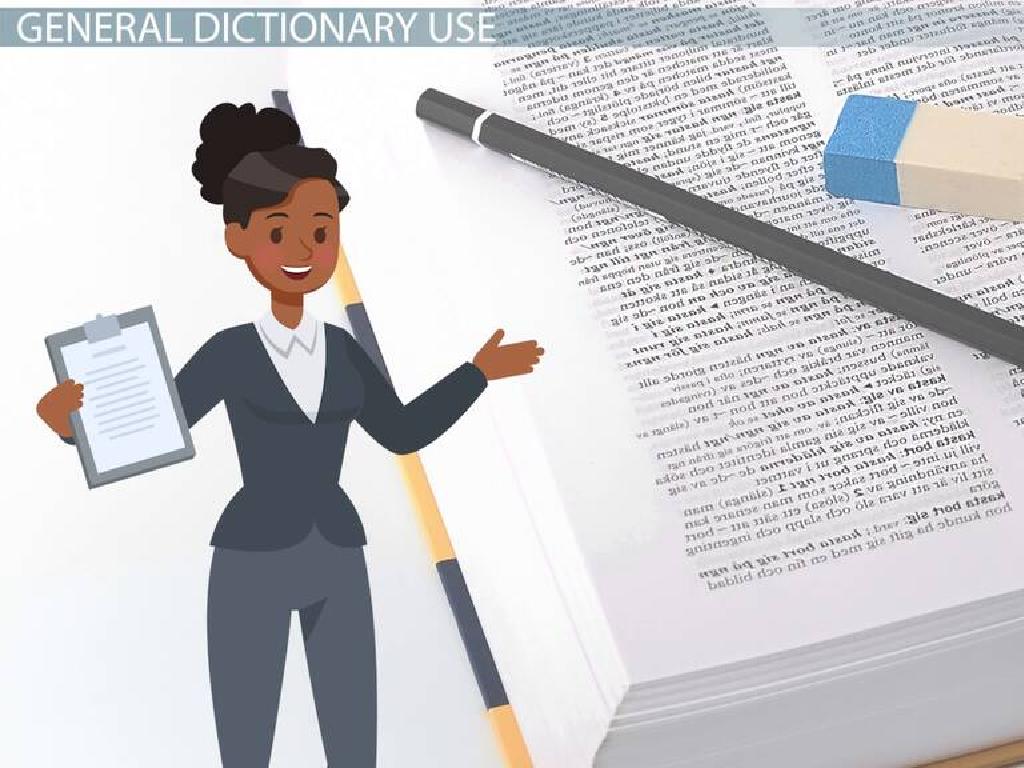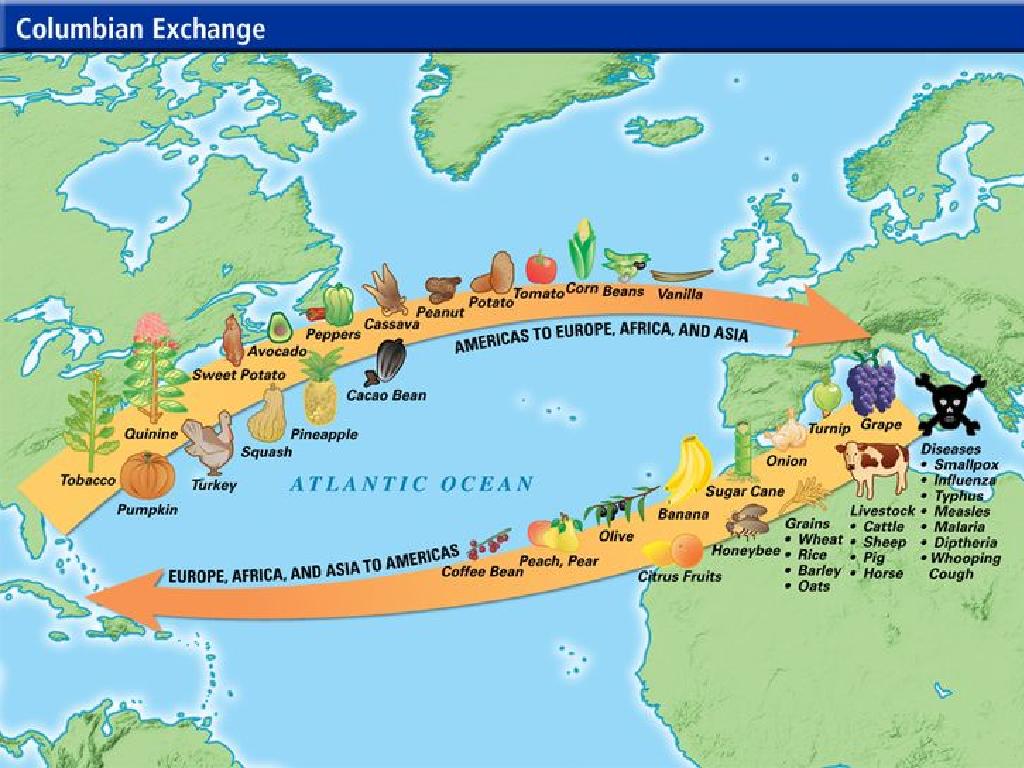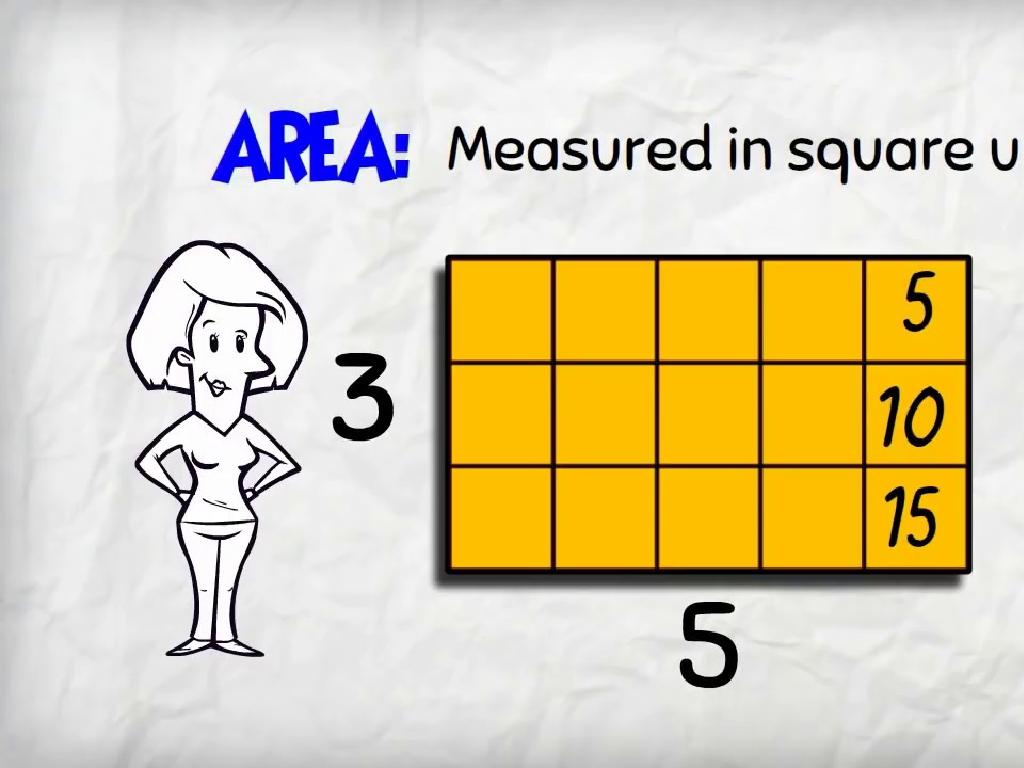Translations: Graph The Image
Subject: Math
Grade: Eighth grade
Topic: Transformations And Congruence
Please LOG IN to download the presentation. Access is available to registered users only.
View More Content
Translations: Moving Shapes on the Plane
– Understanding mathematical transformations
– Transformations change a shape’s position or size.
– Defining congruence in geometry
– Congruence means identical in form; unchanged size or shape.
– Exploring translations: sliding figures
– Translations move a shape without rotating or flipping it.
– Practice translating various shapes
– We’ll use graph paper to slide shapes horizontally and vertically.
|
This slide introduces the concept of transformations in mathematics, focusing on translations as a type of transformation. Students will learn that transformations can change the position, orientation, or size of a shape on a plane. Congruence is explained as a property of figures that are identical in form and size, which remains true under a translation. Emphasize that during translations, shapes are slid across the plane without being rotated or flipped. Provide examples of translations on a coordinate grid and encourage students to practice by moving shapes along the x-axis (horizontally) and y-axis (vertically) to understand the concept better. This will set the foundation for more complex transformations and the study of congruence.
Understanding Translations in Geometry
– Translation: sliding a shape
– A translation moves a figure in a straight line path.
– Properties: size and shape preserved
– After a translation, figures are congruent to their pre-images.
– Real-life examples of translation
– Examples: chess piece moves, book slides on a table.
– Translations on the coordinate plane
– Use coordinates to describe the movement of a shape.
|
This slide introduces the concept of translation in geometry, which is a type of transformation that slides a figure on a plane. Emphasize that during a translation, the shape remains congruent to its original, meaning its size and shape are unchanged. Provide relatable examples such as moving a chess piece or sliding a book across a table to help students visualize the concept. Then, connect this understanding to translations on the coordinate plane, where they will use coordinates to describe the movement. Encourage students to think of other examples of translations they encounter in daily life and be prepared to discuss how the properties of translations apply to those scenarios.
Understanding Coordinates in Translations
– Recap on coordinates
– Coordinates are pairs (x, y) that locate points on a plane
– Reading the coordinate plane
– The coordinate plane has two axes: horizontal (x-axis) and vertical (y-axis)
– Identifying x and y axes
– The x-axis runs left to right; y-axis runs up and down
– Translating points on the plane
– To translate a point, slide it horizontally or vertically on the grid
|
Begin with a brief review of what coordinates are and how they are used to locate points on a plane. Ensure students understand the concept of the coordinate plane, composed of perpendicular x (horizontal) and y (vertical) axes. Discuss how to read coordinates, with the x-value indicating horizontal position and the y-value indicating vertical position. Introduce the concept of translations as movements of points along these axes. Use examples to show how translating a point affects its coordinates. Encourage students to practice by picking points and translating them to new positions on the coordinate plane.
Translating Shapes on the Coordinate Plane
– Graphing the original shape
– Plot the shape’s vertices on the grid
– Translation rules: (x, y) -> (x+a, y+b)
– For right move, increase x; for up, increase y
– Example: Triangle translation
– Move 3 right (x+3) and 2 up (y+2)
– Practice with class activity
|
Begin by demonstrating how to graph the original shape on the coordinate plane, ensuring students understand how to plot points accurately. Explain the rules for translating shapes, emphasizing that ‘a’ and ‘b’ represent the units moved along the x and y-axis, respectively. Provide a clear example, such as translating a triangle 3 units to the right and 2 units up, showing the new coordinates. Conclude with a class activity where students apply these concepts by translating various shapes on graph paper, reinforcing their understanding through practice. Offer at least 4 different shapes for translation to cater to varying student abilities and ensure everyone is engaged.
Translations: Practice Example
– Let’s translate a shape together
– Follow the step-by-step example
– We’ll move a shape on the grid step by step
– Observe size and orientation
– Does the shape stay the same size? Does it turn or flip?
– Check for understanding
– Did the translation change the shape’s size or how it’s facing?
|
This slide is designed for a hands-on practice example of translating a shape on the coordinate grid. Begin by guiding students through the translation process of a shape, step by step, ensuring they understand how to move the shape without rotating or resizing it. Emphasize that translation is a slide, meaning the shape moves without changing its appearance. After completing the example, ask students to reflect on whether the shape’s size or orientation has changed, reinforcing the concept that translations should preserve both. This check for understanding is crucial to ensure students grasp the fundamental properties of translations. Encourage students to ask questions and provide additional examples if needed.
Your Turn to Translate!
– Graph the original shape on paper
– Translate the shape as directed
– Use arrows to show movement direction
– Compare translations with a partner
– Does your partner’s shape match yours?
– Discuss the translation process
– Talk about how you determined the new position
|
This slide introduces an interactive class activity focused on translating shapes on a graph. Students will first graph an original shape on their paper. Then, they will translate the shape according to specific instructions, such as ‘move 3 units up and 4 units to the right.’ After completing the translation, students will pair up to compare their translated shapes with a partner’s to see if they match, discussing any discrepancies and confirming their understanding of the translation process. This activity will help solidify the concept of translations in a fun and collaborative way. For the teacher: Prepare different sets of translation instructions for variety, ensure students understand how to use graph paper for translations, and facilitate discussions among partners to ensure a thorough understanding of the concept.
Real-World Applications of Translations
– Translations in video games
– Moving characters, objects smoothly across the screen.
– Use in engineering and design
– Designing parts that fit together requires precise translations.
– Role in technology
– Translations are key in graphics and interface design.
– Why translations matter
|
This slide aims to show students how the concept of translations is applied in various real-world scenarios, particularly in fields that greatly influence modern life. In video games, translations allow for the movement of characters and objects, creating a dynamic and interactive experience. In engineering and design, understanding translations is crucial for creating components that fit together perfectly. Technology, especially in the realm of computer graphics and user interfaces, relies heavily on translations to ensure elements are displayed correctly on screens. Highlighting the importance of translations in these areas emphasizes the practical value of learning this mathematical concept and its relevance beyond the classroom.
Class Activity: Create Your Translation
– Group activity with shapes
– Follow translation instructions
– Use graph paper for accuracy
– Ensure each point of the shape moves the same distance
– Present translations to class
|
This activity is designed to help students understand the concept of translation in geometry by working in groups. Each group will receive a different set of shapes along with specific translation instructions, such as ‘move 3 units right and 2 units up’. They will use graph paper to perform the translations, which will help them visualize the uniform movement of all points of the shape. Encourage students to check each other’s work for accuracy. After completing the translations, each group will present their results, explaining the process they followed. This will reinforce their understanding and provide an opportunity for peer learning. Possible variations for different groups could include translating different shapes or using different translation vectors. The teacher should circulate to provide guidance and ensure that students are correctly applying the concept of translation.
Review and Reflect: Translations
– Recap of today’s translation concepts
– How we move a figure on the coordinate plane without rotating or resizing it.
– Understanding the importance of translations
– Translations help us understand geometric relations and real-world applications.
– Open floor for questions and reflections
– Encourage personal connections
– Think about how this might apply to real-life scenarios or future math problems.
|
This slide aims to consolidate the students’ understanding of translations in geometry. Begin by summarizing the key points covered in the lesson, such as how to perform a translation on the coordinate plane. Emphasize the practical applications of translations in solving real-world problems and in understanding the properties of shapes. Encourage students to ask questions or share insights about the lesson to foster a collaborative learning environment. Lastly, prompt them to make personal connections with the material, considering how the concept of translations might appear in their daily lives or in future mathematical contexts.
Homework: Mastering Translations
– Practice shape translations
– Translate shapes as instructed on various axes
– Complete the translation worksheet
– Worksheet includes various translation exercises
– Study for the transformations quiz
– Review all types of transformations for the quiz
|
This homework assignment is designed to reinforce the concept of translations in geometry. Students are expected to practice translating shapes on a graph, which involves sliding the shape in any direction without rotating or resizing it. The provided worksheet will contain a series of translation exercises that will help students visualize and understand how shapes move on a plane. Additionally, students should begin studying all transformation types, including rotations, reflections, and dilations, in preparation for the upcoming quiz. It’s crucial to remind students to pay attention to the direction and distance of translations as specified in the instructions. Encourage them to use graph paper to accurately represent translations and check their work.

